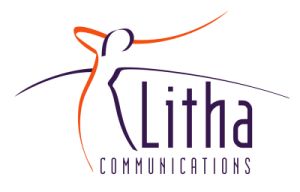Creativity, storytelling and design in an annual report are
essential requirements if one wants readers to be engaged in the organisation’s
activities for the past year and not be put off by dense chunks of numbered text.
This is particularly true of government departments that need to involve their
stakeholders in the processes and potential of various projects and capture
their imagination, buy in and support.
This requires much more than just design. The initial step
is to take the data needed and convert it into prose. Too often, each
department produces copy with extensive numbering that looks more like a
lawyer’s contract than a story about the successes and setbacks of the year.
If one was describing the satisfaction gained from a
successful delivery of services to a colleague or interested party, one would
relate it as a tale – one would not use lists and numbers but rather speak of
the difficulties surmounted, the excitement of well-executed projects and
programmes and the look on people’s faces as they received benefits.
Even obstacles can be instructive, by providing valuable
lessons learned for the forthcoming year and offering an opportunity to
mitigate the circumstances by outlining new preventative measures.
Do more than outline the organisation’s mission, vision and
values – show how committed staff members, executives and all who play a part
in the department deliver them. An annual report is part of the organisation’s
human talent recruitment programme – potential employees, directors or
shareholders can be motivated and excited by this information and long to participate
in its efforts.
Designing interest
Photographs are an essential in an annual report but are
often simply large, static photos of executives, which again fail to capture
the readers’ interest. One group photo of the executives/board should be
sufficient. Let the rest intensely capture the mood of the report.
During this next year, start capturing photos of executives
actively participating in events and recipients of the organisation’s projects
and programmes. With a large library of such photos, the choice for annual
reports can widen to incorporate vivid images of the board, executives and key
staff members actively engaged in service delivery. Team these up with captivating
captions, not “the Minister/CEO.”
If single or group images of the board/executives are
required, ensure that a professional photographer comes in early in the year
and shoots the photos with the correct lighting and background. If necessary,
use a consultant to advise on the kind of makeup, styling and clothes that are
used in television studios to produce attractive photographic effects. Low-level
cellphone images do not translate well into high gloss printing and rushed
photos detract from professionalism of the design.
Figures, while essential for the financial aspects of the
report, should be used sparingly in other parts of the report. Graphs, pie
charts and flow charts are visually more appealing and easier to read and
comprehend. However, if one is supplying these as locked images to the
editorial and design team, ensure that they have been spellchecked, as locked
images cannot be corrected.
Bullet points serve to break up long lists and highlight
certain sections – however, they are not used with punctuation but appear as
single lines. If there is more than one sentence per point, rewrite it to
achieve one idea per point.
Headings and crossheads create interest on a page and, used
with white space, create a pleasing aspect to the reader, albeit subliminal.
Extensive use of capital letters, unless referring to a legal entity should be
avoided, as they break the reader’s concentration and flow.
Editing – more than
proofreading
Though clients ask for proofreading services, what is
usually required is editing, which is ‘the making revisions to and suggestions
about the content of a document, focusing on improving the accuracy of
language, flow and overall readability, as well as checking for grammar and
spelling’.
With multiple authors, there are often inconsistencies in
the document between US English and South African English in the use of such
words as organization vs organisation or program vs programme. There can also
be changes in style, where one department uses the third person and another
favours first person.
Here is where the use of a highly experienced editor is so
essential; the editor reads the entire document, gets the flavour of the house
style, the underlying tone of the document and the visual effects of the
messages and ensures this continuity throughout the report.
Perfection requires
time
With all of the above however, sufficient preparation time
is an essential. Even before the financial year-end is reached, selected
writers should be selected within the company to begin collating data. Despite
the late inclusion of the final financial figures and auditor’s reports, it is
possible to create the bulk of the report within weeks of the year-end, based
on quarterly reports, media interchanges, progress reports and events. However,
convert Excel spreadsheets containing key performance indicators into more
readable prose, as readers find table a strain on the eyes and tend to overlook
or skim through them, which means vital messages may be lost.
Once collected and assembled, the external editor can
assemble this into a readable chronicle of the year’s high and lows, ready for
the first draft, usually produced as a Word document for ease of reading and
proofing. The designer, in the meantime, can create the design shell into which
the text will be inserted. Once the text is adjusted, rewritten and signed off,
it is proof read and then inserted into the design for the first PDF proof,
which creates the look and feel of the final report. The client can then view
the first text-correct design, suggest any possible changes and the final copy
can be produced for printing.
Annual reports are not only legal documents but can be powerful
marketing and fundraising tools.
